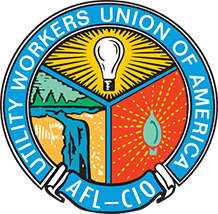In the realm of labor relations, agreements between labor unions and employers play a crucial role in shaping the terms and conditions of employment. Two such agreements that often come into discussion are Project Labor Agreements (PLAs) and Labor Peace Agreements (LPAs). While both aim to promote cooperation between unions and employers, they serve different purposes and operate under different frameworks.
Project Labor Agreements
Project Labor Agreements are pre-hire collective bargaining agreements authorized under the National Labor Relations Act that establish the terms and conditions of employment for a specific construction project. These agreements are negotiated between a project owner or contractor (sometimes a governmental entity) and one or more labor unions before any hiring occurs. A PLA’s primary objective is to ensure labor stability, productivity, and cost-effectiveness throughout the duration of the project. PLAs generally do not apply to the UWUA because we are not in the construction industry.
One of the key features of PLAs is the establishment of uniform work rules, wages, benefits, and dispute resolution procedures. The PLA’s terms apply to all contractors and subcontractors that successfully bid on the project and supersede any existing collective bargaining agreements. By setting these terms in advance, PLAs aim to prevent strikes, work stoppages, and other labor disruptions that could delay the project and inflate costs.
Additionally, PLAs may include provisions for local hiring preferences, apprenticeship programs, and safety standards, thereby promoting community involvement and workforce development. PLAs that include a preference for local hiring are sometimes referred to as Community Workforce Agreements.
Labor Peace Agreements
Labor Peace Agreements are distinct from project labor agreements, although the term “labor peace agreement” is often used to describe both. An LPA is an arrangement between a union and an employer under which one or both sides agree to voluntarily waive certain rights under federal law regarding union organizing and related activity. LPAs are less comprehensive than PLAs and focus primarily on ensuring labor harmony and preventing labor disputes at a specific facility or location. LPAs are often used in the private sector and, in most cases, are not subject to a valid legal challenge. They are not limited to the construction industry.
LPAs are negotiated between an individual union (or union-related group such as a joint bargaining federation) and an employer (or employer group). While these agreements can be negotiated voluntarily, some state and local governments have passed labor peace ordinances requiring private sector employers to secure an LPA with a union as a condition of doing business at a facility or project in which a government entity asserts a “proprietary interest” (usually as the result of governmental financial assistance to a private sector employer).
LPAs and labor peace ordinances can cover a number of different topics, but their fundamental purpose is to compel an employer to grant organizing concessions to a union, such as recognizing the union by card check instead of a secret ballot election, remaining neutral during an organizing drive, giving outside union organizers access to the workplace, and providing workers’ personal contact information to the union.
Labor peace ordinances have been passed in multiple jurisdictions nationwide and typically cover hospitality-related entities like hotels, restaurants, casinos, and airports. These agreements are considered desirable because they ensure that labor disruptions such as strikes, pickets, or protests will not disturb the local government’s financial interest.

